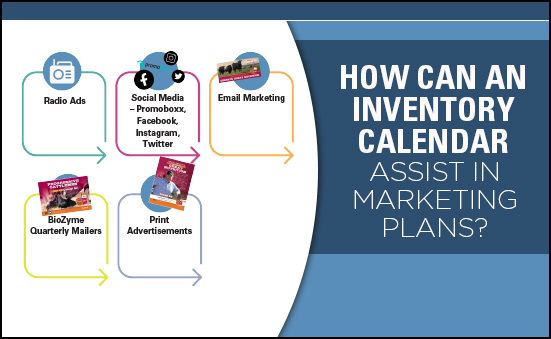CUSTOMER PICK-UPS
- Due to BioZyme additions at both Stockyards and Easton building locations and the resulting limited space for storage, customer orders will need to be picked up within two days of the ship date requested by the customer, which is reiterated upon the receipt of the email notice that your order is ready. We appreciate your cooperation during this time and hope we can count on your support without moving to more extreme measures.
COVID SUPPLY CHAIN UPDATES
- At BioZyme, we are continuing to experience logistics challenges for our ingredients and materials, such as our packaging, which are resulting in both shortages and increased costs. In addition, we got word last week that many of our bulk ingredients will be under a severe shortage until Q2 of 2022, and if they are available, can be expected to cost 200% more. We are working tirelessly to overcome these challenges to keep pricing under control and continue to deliver quality products quickly, but it is getting harder and harder.
FULLFILLMENT UPDATES
- We are currently testing a new fullfillment process on our tubs, and as soon as the test is proven successful, all orders for tubs will be fulfilled directly from the manufacturer. Please watch your email in the coming months for more information about this change.
- As of January 1, 2022, BioZyme® requires a minimum order of 2.5 tons. We will also no longer be mixing pallets for VitaFerm and Gain Smart products. Pallets may be mixed for Vitalize, DuraFerm and Sure Champ products. These changes are being implemented due to the ongoing challenges we are experiencing with reliability and availability of LTL shipping. Distribution partners are available for smaller and mixed pallet orders with coverage in over 30 states. If you need help working through these partners, please contact your Area Sales Manager or the Outreach Support Center at (816) 596-8785 or jenmilller@biozymeinc.com.
PRICING UPDATES
- As of January 1, 2022, new MAP pricing went into effect for several of the Page 2 products. Separate communication with the updated pricing was sent by both mail and email in November. If you did not receive this information, please contact Jennifer Miller at jenmiller@biozymeinc.com.
PRODUCT UPDATES
- Starting February 1, 2022, Vitalize® Blazin’ 32 oz bottle packaging will be updated from a 32 oz twin neck squeeze bottle to a 32 oz pump bottle.
- Starting February 1, 2022, Backyard Boost® Defense will be available in an 8 oz size.
- Potassium level change:
- 19% of the potash market is supplied by Nutrien (BioZyme’s supplier). Jeff Tarsi, Nutrien’s senior Vice President, stated the company has secured less product than usual because manufacturers have less available. The weather and natural gas are to blame. The Texas Arctic blast in February and Hurricane Ida in August disrupted US production.
- This severe shortage of potassium chloride has caused us to have to make changes in the formulas for many of our products this month. Don’t worry; animals get potassium naturally from forage and rarely need more than 1% added to their diet. The following outlines the changes we are having to make:
- No changes:
- VitaFerm Conserve® products
- All high mag products
- Gain Smart® Stocker and Wheat products
- Vitalize® High Performance & Protein Pellet
- Sure Champ® Ration Builder
- Products fed year-round will be reduced to 1% including:
- DuraFerm® Sheep & Goat Concept-Aid® products
- VitaFerm® Cattlemans Blend
- Vitalize® Equine Free Choice
- Sure Camp® Cattle
- VitaFerm® Concept-Aid® beef products will change depending on the forage they are assumed to be fed with:
- 0, 8 and 10 are reduced to 1% since they are typically fed with more mature forages or high grain diets
- 5 the potassium will be removed entirely as it is fed with good quality forage
- The VitaFerm® HEAT® products will have the potassium removed entirely since summer forage provides enough potassium to meet beef cattle requirements.
- Gain Smart® Balancer RU1600 will be reduced to 1% to meet requirements since it is primarily fed with grain supplemented with higher potassium corn byproducts and oilseed meals.





